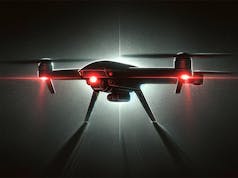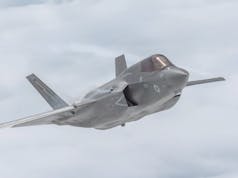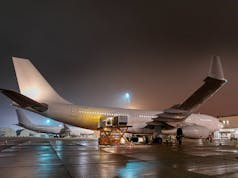The U.S. Air Force has selected BAE Systems, with support from FlexRadio, to provide software-defined radios for its Airborne High-Frequency Radio Modernization (AHFRM) programme.
BAE say here that the contract, which has a value of $176 million, provides a secure alternative to satellite communication methods.
“Our airborne radios are scalable and designed for open architecture applications, making them a solution that’s ready for the Air Force’s future needs,” said Dave Logan, vice president and general manager of C4ISR Solutions at BAE Systems.
“The evolving capabilities of threats in the modern battlefield call for an extensible, modernized anti-jam solution, which our product provides.”
According to a news release:
“The AHFRM solution maintains over-the-horizon communications while defeating jamming from potential threats in a drop-in compatible radio design that maximizes FlexRadio’s commercial off-the-shelf technology. Its scalability, modularity, and capacity provisions for future modernization needs and adjacent operational requirements.”
BAE Systems designs, manufactures, and supplies mission-critical communication systems for the U.S. Department of Defense, allied governments, and large defence aircraft manufacturers.














Is BAE still a UK company ? Its getting huge amounts of business from the U.S….
Yep, But it also has a US arm which is technically a different company.
BAE is the ninth leading US defense contractor but that needs to be put in perspective. It has $6.6 billion in US DOD contracts but that pales in comparison to LM at $74.2 billion (#1) and Boeing at $21.5 billion (#4)
Revenues are pretty evenly split now between US and Non-US operations and it continues to hoover up small US defence contractors. Last year the company as a whole had revenues of £21.3bn up 5% and made an operating profit of £2.4bn up 25%.
Theres also been some market speculation that BAE may make a bid to acquire Rolls Royce but nothing concrete yet.
Would that be a good thing? I would think having engine supplier separate would be better. Will everyone around the world be willing to deal with a defence contractor that is potentially arming there enemies.
Most large US aerospace manufacturers have their own engine divisions and it offers a lot of efficiency and R&D savings. In the commercial airliner market theres four main players, Rolls Royce, Lockheed, Pratt & Whitney and GE Aviation and some smaller joint ventures between the big four and Safran, MTU, and Japanese Aero in various combinations for specific projects. FiatAvio is also a big player but in engines for smaller aircraft and helicopters. Boeing lacking its own engine division tends to turn to GE but not exclusively also using Lockheed and Pratt & Whitney on some jet fighters.
Who the owner is doesnt tend to impact on aircraft engine selection, but rather whose offering cheapest price/best long term support at that particular moment.
I generally agree with your point but I don’t think Lockheed make engines for either civil or military aircraft. The F22 and F35 have PW engines and the Hercules has RR engines. Boeing is legally prevented from making engines for civil aircraft.
I don’t know where you get your info from, Watcherzero, but much of it is factually incorrect. As StevenW says, Lockheed don’t make aero-engines and I can find no record of them ever having done so. That brings it down to the Big Three.
The JV between GE and Safran (CFM Inernational) is not small; it’s massive, holding no.1 in civil aviation with about 40% market share. Historically, the technology has been largely GE’s.
Fiat Avio hasn’t existed for about 10 years. It was taken over (less the space division – now called Avio) by GE and is called GE Aviation. The Italian arm don’t make helicopter engines, but are big in gearboxes and other components.
Personally, I don’t think it’s wise to combine Prime Contractors with Tier 1 Sub-contractors; it’s not good for business overall. The last time I can recall that being the case was Bristol Aeroplane, which made the planes, the engines (Bristol Siddeley), missiles, rockets and some very tasty cars. Although a Raytheon and United Technologies merger has just happened in the States and I suppose that could be called part-Prime and Part-Tier 1.
The British Government has a” Golden Share ” in both company’s.
Can I have an armoured Phantom with an auto-turret please
Driven by Radio ones Steve Wright if we’re talking Radios as well Andy
HF antennas of the past have often been cables running between upper fuselage and tail fin but in the case of a KC-135 it looks like the HF antenna is the horizontal probe on top of the tail fin, visible in the rendering above. It’s probably larger than your average VHF or UHF antenna because of the wavelengths involved. A good idea to keep a working alternative to SatComm, IMO.
It looks like the KC-135 above also has a HF long wire. Perhaps the antenna on top of the vertical stab is no longer used or the aircraft has two different systems for HF comms.
Yes, you’re right Monty, I’ve looked at a few photos now of 135s and they seem to have both fin top antenna, and catenary antenna. Different HF systems perhaps, not sure?